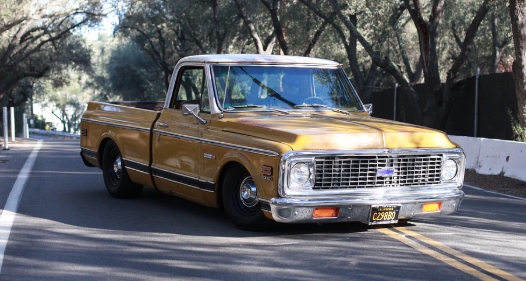The Evolution of the Dodge Tradesman Van: A Look at its Heritage and Models
The Dodge Tradesman holds a special place in the annals of American automotive history, particularly within the segment of commercial vehicles. Initially introduced in the early 1970s, the Tradesman established itself as a reliable choice for tradespeople, families, and commercial fleets alike. Its evolution can be traced through different generations and models, reflecting changes in customer needs, safety standards, and market demands.
The Birth of the Dodge Tradesman (1971 – 1978)
The Dodge Tradesman first appeared in 1971 as part of Dodge’s third-generation full-size van lineup. This model was designed to compete with Ford’s Econoline and Chevrolet’s G-Series, quickly making a name for itself with a robust frame and a practical interior.
Models and Trim Levels:
- 1971-1978 Dodge Tradesman: This era offered a variety of models, including the Tradesman 100, 200, and 300, corresponding to the van’s weight capacity. The Tradesman 100 was the light-duty variant, while the 200 and 300 were offered for heavier loads.
- Engine Options: Customers could choose from a variety of engines, including a 225 cubic inch Slant-6 and several V8 options, such as a 318 cubic inch and the powerful 360 cubic inch V8.
- Trim Levels: The early Tradesman offered basic and custom trims. The Custom trim provided more features, aiming to increase comfort for users who might utilize the vans for family trips as well as work.
The Second Generation and the 1980s (1979 – 1990)
In the late 1970s, Dodge redesigned the Tradesman series, resulting in the second generation that debuted in 1979. This generation aimed to improve the van’s performance and comfort, reflecting the increasing expectations of consumers.
Models and Trim Levels:
- 1979-1990 Dodge Tradesman: The Tradesman lineup continued to feature various weights, namely the Tradesman 150, 250, and later, the 350. The 150 was the most popular with families and lighter commercial users, while the heavier variants catered to tradespeople requiring more cargo capacity.
- Engine Options: By the 1980s, engine technology improved, and buyers had access to a 318 cubic inch V8, 360 cubic inch V8, and a new 3.9-liter V6 engine. This era also saw the introduction of fuel injection, enhancing performance and efficiency.
- Trim Levels: Custom options flourished during this time, with available upgrades including enhanced seating, better interior materials, and additional cargo space configurations. The Tradesman was notably popular for conversions, leading to higher demand for more luxury-centric versions like the “Leisure” and “Brougham” designs.
.
MANY auto lovers not only spend time in their garages to tinker on their autos, but have other projects going on in there as well. Wood working is a popular pastime for the creative type of individual. Not sure what to make next? Or thinking about getting into this kind of hobby? There’s lots of possibilities… Here’s some of them…

.
The 1990s: A Changing Market (1991 – 2000)
The 1990s brought significant changes to both consumer preferences and regulations affecting the automotive industry. As the decade progressed, the Dodge Tradesman had to adapt to new competition and develop more versatility.
Models and Trim Levels:
- 1991-2000 Dodge Ram Van (formerly Tradesman): In 1994, the Tradesman name was officially replaced by the “Dodge Ram Van.” However, the essence remained. Originally, the 150 and 250 series continued in various configurations.
- Engine Options: This era introduced even more powerful options, including a 5.2-liter (318 cubic inch) V8 and a 5.9-liter (360 cubic inch) V8, catering to those who needed robust performance.
- Trim Levels: Features like air conditioning, more refined seating options, and a range of decor packages became more mainstream. Furthermore, a “B” trim designation typically signified lower equipment levels for more budget-conscious buyers.
The Dawn of a New Century (2001 – 2003)
The Dodge Tradesman took further steps towards modernization in the early 2000s, ultimately resulting in a complete overhaul.
Models and Trim Levels:
- 2001-2003 Dodge Ram Van: This period marked the end for the Tradesman nameplate, transitioning completely to the “Ram” branding influenced by the overall Dodge truck family.
- Engine Options: The Ram Van continued to feature updated V8 engines, further refining fuel efficiency while keeping power levels solid.
- Trim Levels: Options varied, with base and SLT trims, offering more comfort and convenience features to meet growing customer expectations for both commercial and personal use.
The Conclusion of an Era (2003)
By the time 2003 rolled around, changes in consumer preferences towards more efficient vehicles would lead to the eventual discontinuation of the Dodge Ram Van series. The rise of the minivan, along with the need for more compact and fuel-efficient options, saw many tradespeople turn to smaller, more versatile options like the Dodge Sprinter and various light-duty trucks.
Summary of Key Features:
- Interior Comfort: Throughout its duration, the Tradesman progressively enhanced its interior space and adjustability, acknowledging the needs of both tradespeople and families.
- Versatility: The Tradesman’s design appealed to a wide customer base, capable of serving as both a cargo van and a passenger transporter.
- Legacy: The Tradesman’s evolution reflects broader changes within the automotive industry, accommodating increased competition while focusing on reliability.
Conclusion
The evolution of the Dodge Tradesman spans over three decades, demonstrating a remarkable ability to adapt to changing consumer tastes and industry demands. From its origins as a simple, utilitarian work van to being a versatile vehicle suited for families and businesses alike, the Tradesman set a standard for durability and functionality. While production concluded in the early 2000s, its legacy remains alive within the modern iterations of Dodge’s commercial vehicles, reminding us of its historical significance and value to a myriad of users across America.







